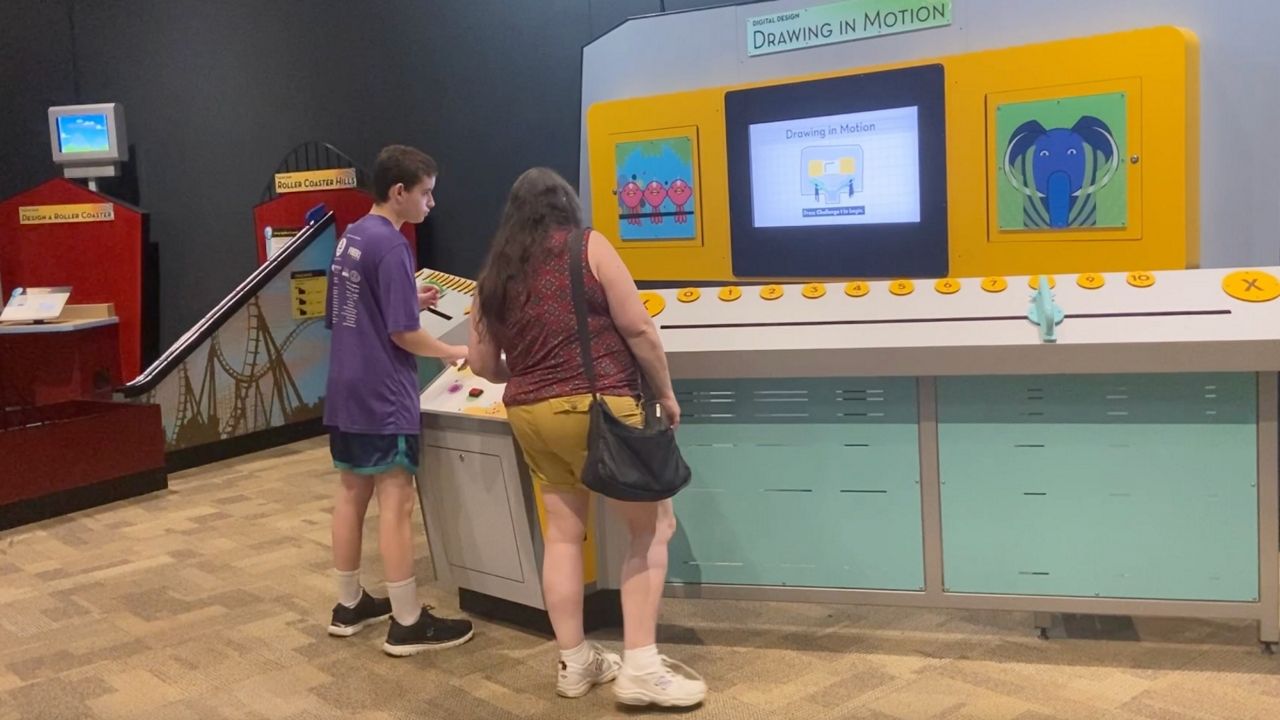Preventing summer regression in children with disabilities
Preventing summer regression in children with disabilities Spectrum News


James Ellenberger Explores Music at the Museum of Innovation & Science

James Ellenberger is learning all about mixing music at the Museum of Innovation & Science.
“Some of the things that had the algebra, it helps them perceive real-life uses of math, and we’re doing some of that at home also. But it gets some hands-on out in the community, doing things that are educational and that he enjoys,” says Carolyn Huston, James’ mother.
Preventing Academic Regression in Children with Autism
James has autism and academic regression is a big concern in the summer months. That is why his mom takes him to museums like this, to prevent it.
“If he regresses, then the first month or two of school is wasted, just starting and reviewing everything that he’s done before,” Huston said.
All children can experience academic setback in the summer, which many refer to as “summer slide.” According to the Institute for Multi Sensory Education, kids with disabilities tend to be more at risk for summer learning loss.
“Regression is a trait of autism in general. It can start in the toddler years and kind of continue with them as they grow,” says Caitlyn Wheeler, a social worker at the Wildwood School.
Summer slide can look different for kids with disabilities compared to their neurotypical peers and a big concern is not only academic but social regression too.
“With a typical kid, they might have an easier time regaining skills when they come back in the school year because they don’t need as much prompting and support,” Wheeler said.
Preventing Summer Slide and Promoting Sustainable Development Goals
A great way to try and prevent summer slide is by getting kids out into the community and looking for ways to embed learning in everyday routines.
“Do as much as you can with them. Interactive educational-type activities, fun activities, just as you’re cooking, have them help. Do some of the math,” Huston said.
Academic enrichment doesn’t have to be expensive either.
“You can always set up a scavenger hunt, say find this, this and this, and try to take pictures of them in the wild or just find them and check them off. When you find them and show somebody else. Libraries have so many programs going for kids in the summer, and that doesn’t cost anything to go to either,” Huston said.
Conclusion
By engaging children in educational activities during the summer months, we can prevent academic regression and promote the achievement of the Sustainable Development Goals (SDGs). Ensuring inclusive and equitable quality education (SDG 4) for all children, including those with disabilities, is crucial in building a sustainable future.
SDGs, Targets, and Indicators
| SDGs | Targets | Indicators |
|---|---|---|
| SDG 4: Quality Education | 4.1 By 2030, ensure that all girls and boys complete free, equitable and quality primary and secondary education leading to relevant and effective learning outcomes | No specific indicators mentioned in the article |
| SDG 10: Reduced Inequalities | 10.2 By 2030, empower and promote the social, economic and political inclusion of all, irrespective of age, sex, disability, race, ethnicity, origin, religion or economic or other status | No specific indicators mentioned in the article |
| SDG 17: Partnerships for the Goals | 17.17 Encourage and promote effective public, public-private and civil society partnerships, building on the experience and resourcing strategies of partnerships | No specific indicators mentioned in the article |
1. Which SDGs are addressed or connected to the issues highlighted in the article?
The issues highlighted in the article are connected to SDG 4: Quality Education and SDG 10: Reduced Inequalities.
2. What specific targets under those SDGs can be identified based on the article’s content?
Based on the article’s content, the specific target under SDG 4: Quality Education that can be identified is target 4.1: By 2030, ensure that all girls and boys complete free, equitable and quality primary and secondary education leading to relevant and effective learning outcomes.
Under SDG 10: Reduced Inequalities, the specific target that can be identified is target 10.2: By 2030, empower and promote the social, economic and political inclusion of all, irrespective of age, sex, disability, race, ethnicity, origin, religion or economic or other status.
3. Are there any indicators mentioned or implied in the article that can be used to measure progress towards the identified targets?
No specific indicators are mentioned or implied in the article that can be used to measure progress towards the identified targets.
Behold! This splendid article springs forth from the wellspring of knowledge, shaped by a wondrous proprietary AI technology that delved into a vast ocean of data, illuminating the path towards the Sustainable Development Goals. Remember that all rights are reserved by SDG Investors LLC, empowering us to champion progress together.
Source: spectrumlocalnews.com

Join us, as fellow seekers of change, on a transformative journey at https://sdgtalks.ai/welcome, where you can become a member and actively contribute to shaping a brighter future.







